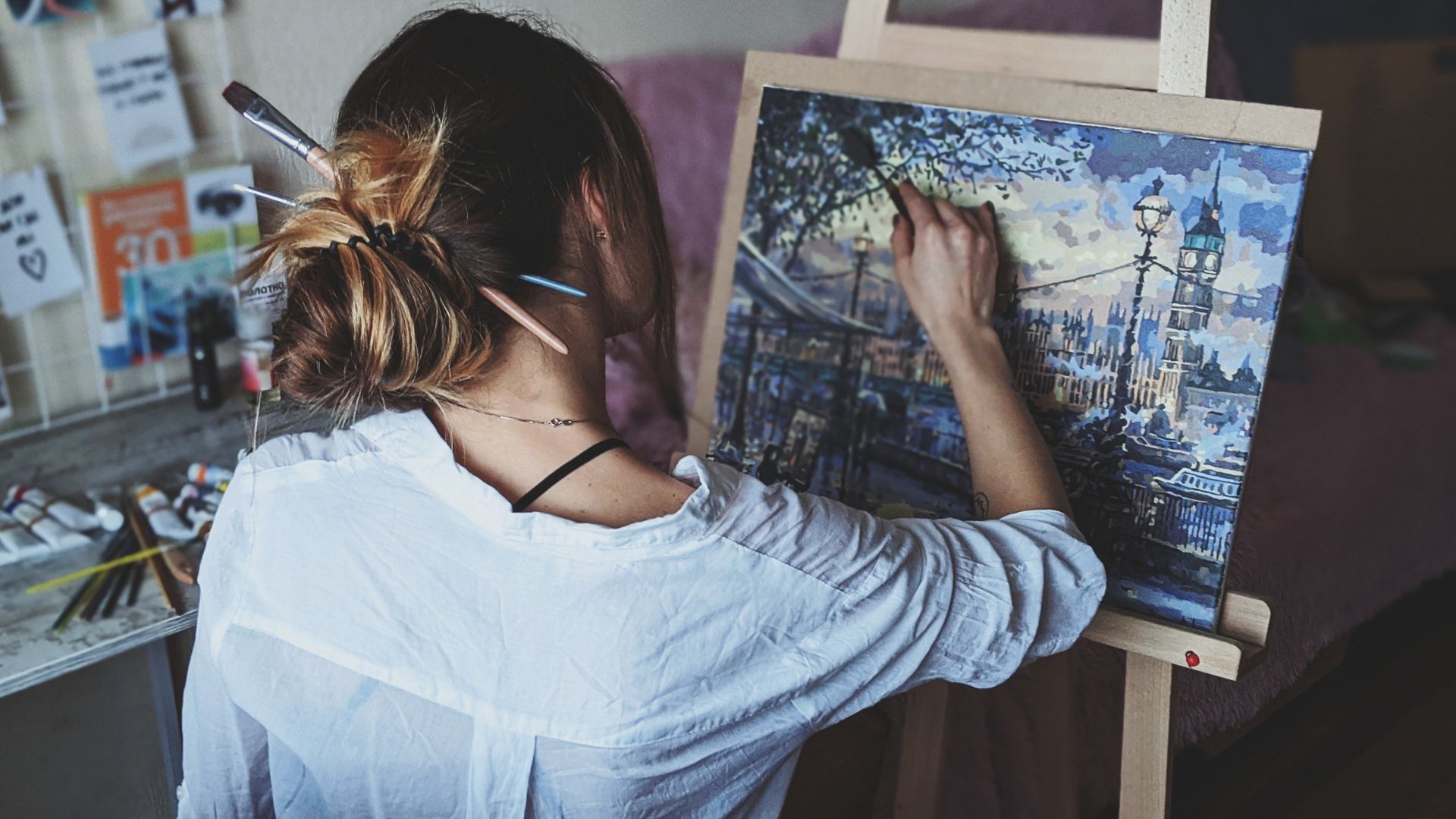When it comes to art, the canvas is a crucial choice that can greatly impact the final masterpiece. Aspiring artists and seasoned professionals often debate whether using wall paint on canvas is a viable option for their artistic endeavors. Let’s dive into this topic, exploring its possibilities and limitations to help you make an informed decision.
Understanding Wall Paint
Wall paint, typically used for interior or exterior surfaces of buildings, comes in various formulations such as latex, acrylic, oil-based, and more. Its primary function is to cover large areas and provide protection against weather elements or wear and tear.
Wall Paint on Canvas: Pros and Cons
Pros
Availability and Affordability
One of the significant advantages of using wall paint on canvas is its accessibility and cost-effectiveness. Wall paint is readily available in a wide array of colors at local hardware or paint stores, making it a convenient option for artists on a budget.
Viscosity and Coverage
Certain types of wall paint, like acrylic latex, offer good viscosity and coverage. They can be applied smoothly on canvas, creating a base layer for artworks.

Experimentation and Texture
Artists often appreciate the opportunity to experiment. Wall paint allows for playing with texture, layering, and mixing colors, enabling a diverse range of creative expressions.
Cons
Longevity and Quality
While wall paint may initially seem cost-effective, it might lack the archival quality found in artist-grade paints. Over time, wall paint may deteriorate, fade, or yellow, affecting the longevity of the artwork.
Flexibility and Composition
Wall paint might lack the flexibility and composition required for certain artistic techniques or detailed work. Artist-grade paints are specifically formulated to withstand aging and maintain their vibrancy.
Is Wall Paint Ideal for Professional Artists?
The suitability of wall paint for professional artists largely depends on the artistic goals, intended longevity of the artwork, and desired quality. For hobbyists exploring different mediums or artists aiming for temporary or experimental pieces, wall paint on canvas can be an intriguing choice.
However, for professional artworks intended for galleries, exhibitions, or long-term preservation, investing in high-quality artist-grade paints might be more advisable. These paints are formulated to meet archival standards, ensuring the durability and vibrancy of the artwork over time.
So,…
In the world of art, experimentation is encouraged, and utilizing wall paint on canvas can be a part of this creative exploration. It offers accessibility, affordability, and an opportunity for unique textural effects. Yet, for artists seeking longevity, quality, and professional-grade results, investing in artist-grade paints might be a more prudent choice.
The choice of canvas and paint is a deeply personal decision for artists. It’s about finding what best aligns with your artistic vision and goals. Whether it’s wall paint, artist-grade acrylics, oils, or other mediums, each offers its own set of advantages and limitations.
External Resources for Further Reading:
- Understanding Different Types of Paint – Learn about various paint types and their suitability for different artistic projects.
- The Importance of Archival Quality in Art Materials – Discover why archival quality matters in preserving artwork and the significance of artist-grade materials.
- Canvas Painting Techniques – Explore different techniques and approaches for painting on canvas, regardless of the paint type used.
Let’s delve deeper into the nuances of using wall paint on canvas and how professional artists can navigate this choice.
Tips for Using Wall Paint on Canvas
Surface Preparation
Preparing the canvas surface is crucial. Ensure the canvas is properly primed or apply a suitable primer to enhance paint adhesion. Sanding the canvas lightly before priming can help create a smoother surface for painting.
Experimentation with Texture
Wall paint’s thicker consistency can offer unique opportunities for texture creation. Artists can explore using different tools like sponges, palette knives, or even unconventional items to create intriguing textures and layers.
Mixing and Color Play
Blend wall paint colors to create new shades or experiment with mixing different types of wall paint to achieve varied textures and effects. This experimentation can lead to unexpected and captivating results.
Sealing and Protection
Given that wall paint may not have the same archival properties as artist-grade paints, it’s crucial to protect the finished artwork. Consider using a suitable varnish or sealant to safeguard the painting from environmental factors like UV rays and dust.
Understanding Limitations
While wall paint offers versatility, it may not behave the same way artist-grade paints do. Understanding its limitations, such as potential color shifting or durability issues over time, can help manage expectations.
Transitioning to Professional Grade Paints
For artists considering a shift from using wall paint to professional-grade paints, here are some essential points to consider:
Quality and Consistency
Investing in artist-grade paints ensures consistent quality, color vibrancy, and longevity. These paints are formulated to meet specific standards, offering superior pigmentation and archival properties.
Gradual Transition
Start by experimenting with small quantities of professional paints alongside wall paint. This gradual transition allows artists to familiarize themselves with the differences in texture, handling, and color intensity.
Understanding Mediums and Techniques
Artist-grade paints come with a range of mediums and additives to modify consistency, drying time, or texture. Exploring these mediums and techniques can open up new creative possibilities for artists.
Final Thoughts
The choice between wall paint and professional-grade paints on canvas ultimately boils down to the artist’s preferences, goals, and artistic vision. While wall paint presents affordability and experimentation opportunities, professional-grade paints offer longevity and quality assurance for professional artworks.
Remember, there are no strict rules in art experimentation and exploration are key components of the creative process. Embrace the journey, learn from each stroke, and let your artistic expression flourish.
Additional Resources for Paint Application and Transitioning:
- Canvas Preparation Techniques – Explore detailed techniques for preparing canvas surfaces before painting.
- Understanding Artist-Grade Paints – Gain insights into the differences between artist-grade and student-grade paints and their significance in professional artwork.
- Introduction to Acrylic Painting Techniques – Delve into various techniques specifically tailored for acrylic paints, aiding artists in exploring their potential.
Comparison tabular
Here’s a tabular comparison between using wall paint and professional-grade paints on canvas for artistic purposes:
| Aspect | Wall Paint on Canvas | Professional-grade Paints on Canvas |
|---|---|---|
| Cost | Generally more affordable and accessible | Often more expensive, but offers higher quality |
| Variety of Colors | Wide range available in hardware stores | Extensive color palettes with superior pigmentation |
| Texture and Experimentation | Allows for unique textures and experimentation | Consistent texture and performance for precision |
| Longevity | May deteriorate over time, lacking archival quality | Designed for durability, offering archival quality |
| Suitability for Professionals | Suitable for experimentation or temporary works | Preferred for professional-grade, long-lasting pieces |
| Availability | Easily found in local stores | Specific art supply stores or online retailers |
| Surface Preparation | May require additional priming for better adhesion | Often pre-primed or formulated for canvas use |
| Quality Assurance | Variable quality based on paint brand and type | Consistent quality meeting industry standards |
| Protective Measures | May need additional sealing or varnishing | Often formulated to resist UV rays and environmental factors |
| Artistic Transition | Offers a stepping stone for experimentation | Ensures professional-grade output for artworks |
This table highlights the key differences between using wall paint and professional-grade paints on canvas, considering aspects such as cost, quality, longevity, and suitability for professional artworks.
Remember, the choice between these paint types ultimately depends on the artist’s preferences, artistic goals, and desired outcomes for their creations. Both options offer unique advantages and limitations, catering to different artistic needs and styles.
Wrapping up
Choosing the right paint for your artistic journey is a personal decision that intertwines with your creative vision and goals. Whether you opt for the accessibility and experimentation offered by wall paint or the assurance of quality and longevity provided by professional-grade paints, remember that each stroke on canvas is an expression of your artistic voice.
Embrace the exploration, revel in the experimentation, and let your creativity flow. Art is about the process as much as the final creation. So, whether you’re a budding artist testing new waters or a seasoned professional seeking to push boundaries, the canvas awaits your touch, your ideas, and your imagination.
Regardless of the paint you choose, your art is a reflection of your unique perspective. Let it speak volumes, share stories, and captivate hearts. May your artistic journey be filled with inspiration, growth, and boundless creativity.
Happy painting.

For over a decade, I’ve been Mike, an artist, crafter, and designer deeply immersed in the Croc world. I thrive on crafting unique, size-inclusive patterns, fostering creativity, and sharing them on ktforum.com. My designs aim to ignite your creative spark and delight you, ensuring clarity and ease of use through rigorous testing. Join me in expressing your creative flair and showcasing your craft with joy.
Related Posts
- Can You Paint Over Existing Wall Paint on Canvas
If you're an aspiring artist or someone enthusiastic about trying their hand at painting, you…
- Ensuring Longevity: Wall Paint on Canvas
When it comes to painting, the canvas serves as an artist's playground, a surface that…
- Exploring Temporary Art with Wall Paint on Canvas
When it comes to art, experimentation knows no bounds. Have you ever considered using wall…
- Is Wall Paint Suitable for Canvas
Absolutely. Using wall paint on canvas is entirely possible and can produce some fantastic results.…

